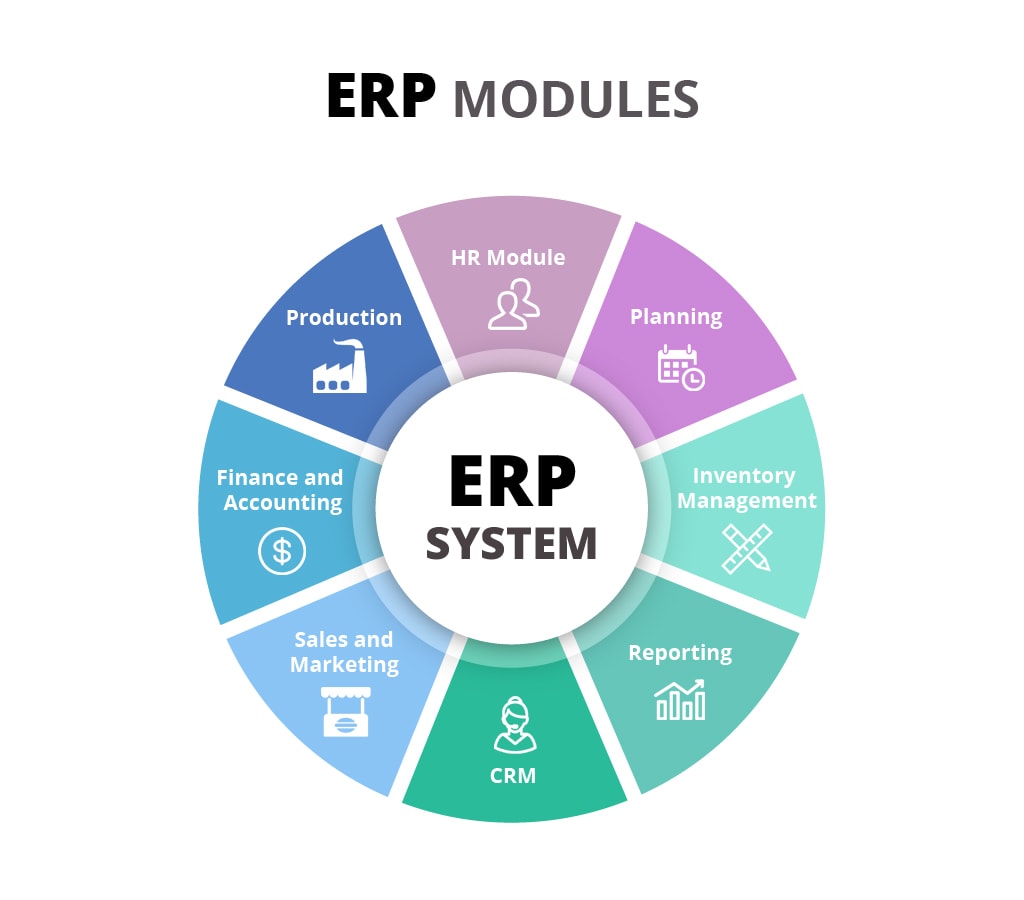How much does it cost to develop an erp? practical example
Different Types of ERP System Modules and Their Uses

Today, we will discuss the various types of ERP system modules and their specific uses. ERP, or Enterprise Resource Planning, is a vital tool for businesses to streamline their operations, improve efficiency, and enhance overall productivity. Let's explore the different modules that make up an ERP system and understand their functionalities.
Human Resource Management (HRM) Module:
The HRM module within an ERP system handles various HR-related tasks such as recruitment, employee onboarding, performance management, payroll, and benefits administration. It helps organizations manage their workforce effectively and create a harmonious work environment.
Supply Chain Management (SCM) Module:
The SCM module focuses on managing the entire supply chain process, from procurement to product delivery. It optimizes inventory levels, improves supplier collaboration, and ensures timely order fulfillment. This module helps businesses streamline their supply chain operations and achieve operational excellence.
Customer Relationship Management (CRM) Module:
The CRM module in an ERP system allows businesses to manage their customer interactions effectively. It helps in tracking customer information, managing leads and opportunities, and automating sales and marketing processes. This module is crucial for boosting sales, enhancing customer satisfaction, and building stronger relationships with clients.
Financial Management Module:
The financial management module handles all financial transactions, including accounts payable and receivable, general ledger, budgeting, and financial reporting. It provides businesses with accurate financial information, helps in budget planning, and ensures regulatory compliance.
Inventory Management Module:
The inventory management module within an ERP system allows businesses to track and manage their inventory levels efficiently. It enables organizations to optimize inventory utilization, reduce holding costs, and streamline procurement processes. This module ensures smooth inventory flow and minimizes stock-outs.
Manufacturing Module:
The manufacturing module handles the planning, execution, and control of manufacturing processes. It enables businesses to manage production orders, schedule resources, track work in progress, and ensure quality control. This module plays a pivotal role in optimizing manufacturing operations and reducing production cycle times.
Conclusion:
In conclusion, ERP system modules are designed to meet the diverse needs of modern businesses. The different modules work collaboratively to streamline operations, enhance productivity, and drive overall growth. By implementing an ERP system and leveraging its specific modules, businesses can gain a competitive edge in today's dynamic marketplace.
How Much Does It Cost to Develop an ERP? Practical Example

Today, we will discuss the cost of developing an ERP system and explore a practical example to understand the financial implications. Developing an ERP system involves various factors that contribute to the overall cost. Let's dive into the example to gain insights into the expenses involved in ERP development.
Defining the Project Scope:
Properly defining the project scope is crucial for estimating the cost of ERP development accurately. It involves understanding the desired functionalities, modules required, integrations with other systems, and any customizations needed to meet specific business requirements.
System Analysis and Design:
The system analysis and design phase focuses on capturing detailed requirements and designing the ERP system architecture. This involves creating wireframes, data models, user interface designs, and defining system workflows.
Development and Integration:
The development phase involves coding the ERP system modules, creating database structures, and integrating various modules. This requires skilled developers, database administrators, and integration experts.
Testing and Quality Assurance:
Thorough testing and quality assurance are essential to ensure the ERP system functions flawlessly. It involves different types of testing, including unit testing, integration testing, system testing, and user acceptance testing.
Deployment and Maintenance:
Once the ERP system is developed and tested, it needs to be deployed on the production environment. Additionally, ongoing maintenance, updates, and support are necessary to ensure the system's continuous operation and optimal performance.
Conclusion:
In conclusion, the cost of developing an ERP system can vary based on the project scope, complexity, customization requirements, and other factors. It is essential to engage with a reliable software development partner who can accurately assess the project's cost and deliver a high-quality ERP system within the allocated budget.
Recipe Title
Introduction: Describe the recipe and its inspiration.
Ingredients:
- Ingredient 1
- Ingredient 2
- Ingredient 3
...
Instructions:
1. Step 1: Describe the first step of the recipe.
2. Step 2: Describe the second step of the recipe.
3. Step 3: Describe the third step of the recipe.
...
Conclusion:
In conclusion, this recipe offers a delicious dish that you can try in the comfort of your own kitchen. Follow the instructions and enjoy a wonderful meal with your loved ones.